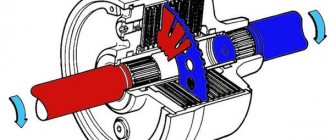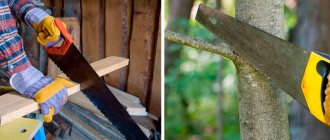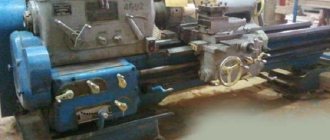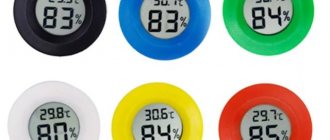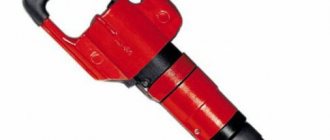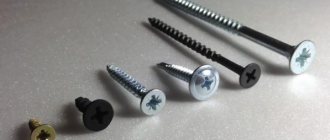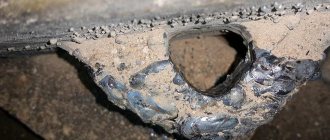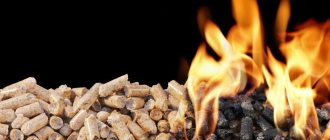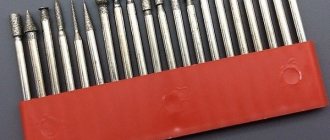Cold or hot metal drawing is a type of metal forming. Using these methods, an assortment of round and shaped wires, rods, pipes and other products made of ferrous, non-ferrous metals and alloys are produced that are sold in the retail chain. For this purpose, drawing equipment is used, which, according to the kinematic principle, makes it possible to obtain products of the required diameter using single and multiple drawing methods. Twisted fittings, wire, metal ropes, mesh and fasteners are obtained from products made by drawing, where a drawing machine or machine is used. Products obtained by drawing are used in various industries, agriculture and by home craftsmen.
The essence and purpose of the drawing operation
The essence of the drawing process is to pull a metal workpiece of a larger diameter through a hole of the required shape and obtain a product of a smaller diameter. Manufactured products are characterized by the quality of the outer surface, density and accuracy of cross-sectional dimensions. Operations are performed on special machines called drawing mills. They increase labor productivity: the labor intensity of manufacturing becomes much lower than when producing such products by other methods.
Drawing mills are produced by manufacturers with rectilinear movement of the workpiece and with winding on drums. In the latter case, they can be with one or more driving drums, which allows one or several workpieces to be drawn at the same time.
Hello student
Drawing is the process of deforming metal when pulling it through a hole whose output size is smaller than the original cross-section of the workpiece being processed.
Drawing is used to produce mainly thin wires with a diameter of up to 0.065 mm, as well as rods and thin-walled pipes of precise size. In some cases, profile assortment is finished by drawing.
Rolling produces wire with a diameter of at least 5 mm; To produce thinner varieties, they resort to drawing. Thin grades are not produced by rolling due to the rapid cooling of the metal.
The drawing process is schematically represented in Fig. 311, a.
In fig. 311, b shows three types of holes that can be made in the drawing board. The best is form A; it allows the drawn metal to gradually reduce its cross-section, and also reduces to a minimum the friction force that occurs during drawing.
Drawing holes, called eyes, dies, dies, can be made either in the drawing board itself, or in individual parts inserted into the board; in the latter case the board may be made of mild steel.
If the eyes are made in the boards themselves, the material used for them is high-carbon steel, chromium or chrome-tungsten, and special chromium cast iron.
Special steel, hard alloys, diamond, and agate are used as materials for insert eyes.
Thinning coefficient. The ratio of the diameter of the wire after passing through the drawing hole to its diameter before passing is called the thinning coefficient
here d1 is the diameter of the wire after drawing;
d is the diameter of the wire before drawing;
K is the thinning coefficient.
The smaller the value of K, the fewer passes through the drawing holes a wire of a given diameter can be obtained from the same source material. But the thinning coefficient cannot be reduced arbitrarily, since if its value goes beyond a certain minimum, the wire will break.
To determine the minimum value of the thinning coefficient, you need to clearly imagine the nature of the deformations experienced by the metal passing through the drawing hole.
The part of the wire located in the drawing hole is subjected to compression from the side of the hole cone; this pressure must be greater than the elastic limit of the wire material; the part of the wire located between the drawing board and the pulling mechanism experiences tension; the magnitude of the tensile force should not exceed the elastic limit of the wire material.
Let us denote by d the diameter of the wire before passing through the drawing hole and d1 after passing through it (Fig. 312), z is the stress experienced by the wire in the stretched part, p is the pressure experienced by the wire from the side of the cone, y is the coefficient of friction between the wire materials and drawing board; then we get the following equality:
Since E,Fd is the lateral surface of the part of the cone in contact with the wire, then
When drawing mild steel wire, z = 20, p = 40 and y = 0.1 can be taken; then at a = 15°
For a stiffer material, the K value increases to 0.95.
Determination of the number of passes through drawing holes.
Taking the value of K constant when drawing a certain type of wire, it is possible, based on the initial and final diameters of the wire and the value of K, to determine the number of passes of the wire through the drawing holes to obtain a given final diameter.
Designating the diameters of the eyes through which the wire will be passed successively with the letters d1, d2...,dn, we have
The force required for drawing increases with decreasing thinning coefficient. The more the wire cross-section changes during the drawing process, the greater the force required for drawing; it can be determined by the formula
here k is the resistance of the material to deformation, taken equal to the arithmetic mean of its strength before and after drawing (the mechanical properties of the material after drawing change somewhat due to hardening);
F1 is the cross-sectional area of the wire after drawing;
F0 is the cross-sectional area of the wire before drawing;
y—friction coefficient;
a - angle of the drawing eye (see Fig. 312).
Power required for drawing
, can be found from the equality
Drawing machines.
Drawing machines are divided into machines with linear motion, or tongs, and machines with winding of the processed material, or block (drum).
Pincer machines are used for drawing thick short rods or pipes, block machines are used for drawing thin wire of arbitrary length.
The device of a pincer drawing machine is shown in Fig. 313, The movement of the roller chain and the pliers associated with it occurs in the direction indicated by the arrow. The pliers grab the pointed end of a rod or pipe passed through the drawing hole and drag it through the board. When the pliers reach the extreme right position, the hook that hooks the pliers to the chain jumps off the chain and the dragging stops. If you need to get a bar longer than the machine, the pliers move to the left end of the machine, and the bar is grabbed in a new place.
Work on such a machine proceeds slowly, with interruptions, so pincer machines are not used in the production of wire; they are used for drawing so-called calibrated iron and pipes.
The block stack device is shown in Fig. 314, a, b, c. The drum 1, on which the wire pulled through the drawing board 2 is wound, is mounted on a vertical shaft 3, the rotation of which is transmitted through bevel gears 4 and 5; lever 6 serves to lift the drum.
A chain with pliers is attached to the drum, capturing the pointed end of the wire passed through the drawing board. A cup of lubricant is placed in front of the drawing board, through which the wire is passed to facilitate drawing.
When drawing large-diameter wire, it is passed through a solution of sulfuric acid and copper sulfate in water (2-15 kg of sulfuric acid, 1-4 kg of copper sulfate per 70 kg of water). This, on the one hand, facilitates the work of drawing, since sulfuric acid somewhat corrodes the surface of the wire, and on the other, due to the fact that the copper fills the resulting irregularities, the wire receives a beautiful smooth surface.
There are also machines on which the wire is pulled through several holes at once. This method of drawing is called continuous.
Fig. 315 shows the structure of a continuous drawing machine having eight grooved blocks and the same number of drawing boards.
The wire from reel 1 passes through the eye of the drawing board and is wound onto the lower step of the drawing drum; Having made several turns around the step, it moves to the next (left), slightly larger stage of the drum, and from it enters the next smaller eye, etc. Having passed through the last smallest drawing hole, the wire enters receiving drum 2. Diameters of individual drums matched to the speeds of the gradually thinning wire.
During the drawing process, the wire is hardened and made brittle; To restore softness, it is annealed.
If the wire becomes excessively brittle during the drawing process, it is annealed between successive allowances through the drawing holes.
Pipe drawing can be done: 1) on a fixed mandrel; 2) on a mandrel moving with the pipe; 3) without mandrel.
Drawing on a stationary mandrel is shown schematically in Fig. 316, a; A diagram of the device for drawing pipes on a movable mandrel is shown in Fig. 316, b; 1 - head with a conical hole into which dies of various sizes 2 are inserted (the size of the dies determines the size of the outer diameter of the prepared pipe); the end of the pipe is fixed in the drawing head 3, and the mandrel 5 is fixed in the head 4. The head of the mandrel 6 is fixed on the mandrel 5. Before starting work, the mandrel is moved to the left, the pipe with a slightly crimped end is passed through the drawing hole and secured in the drawing head; After this, the mandrel is pushed into the pipe. When the machine mechanism is set in motion, the pipe is drawn through the drawing hole, and it receives the dimensions determined by the dies and the mandrel head.
In fig. 316, c shows a mandrel moving with pipe 1, and securing the pipe to such a mandrel 2. To remove the mandrel from the pipe after crimping it, special devices are sometimes used.
Drawing without a mandrel is used in the manufacture of small diameters, pre-processed on machines with a mandrel. In this case, by preliminary drawing, pipes are made with a slightly larger diameter than the specified one and with a slightly smaller wall thickness; By passing through drawing holes, the pipe diameter is reduced and the pipe wall thickness is increased.
Drawing bimetallic wire is no different from ordinary wire drawing.
Download abstract: You do not have access to download files from our server. HOW TO DOWNLOAD HERE
Archive password: privetstudent.com
Types and methods of drawing
Drawing is performed on a drawing mill.
Structurally, the device consists of the following main parts: a die (die), mandrels of various designs, broaching and auxiliary devices for automation and mechanization of the process. In this case, the drawing machine of a rectilinear design is distinguished according to the principle of operation of the main motor of continuous action (track), hydraulic, chain and rope. The process is classified according to the following parameters:
- by type (wet, dry);
- heating the workpiece (cold, hot);
- number of drawn workpieces (1, 2, 4, 8);
- degree of purity of the resulting product (rough, finishing);
- mobility of the drag (stationary, movable);
- number of transitions (single and multiple);
- method of traction (hydraulic, drum, chain).
The variety of parameters has given rise to a huge number of manufactured units, differing in technical characteristics, work technology and productivity.
Drawing is used to produce pipes with a diameter of 0.3÷500 mm with a wall thickness of 0.05÷6 mm. In this case, manufacturing methods can be as follows:
- draft;
- profiling method;
- hydrodynamic friction;
- on a special mandrel (fixed short, long movable, floating);
- on a deformable core;
- with distribution of a pipe-shaped workpiece.
The method, and therefore the equipment for it, is chosen depending on the requirements for the finished product and the brand of the workpiece used. Pipes are manufactured using a chain and drum drawing mill. In the latter case, drawing is called coil drawing.
Special mills for broaching
Metal can be processed by drawing in several passes. The picture will be presented for illustrative purposes.
As for the blanks, they are most often made of non-ferrous metal and steel. The initial section can be equal to 0.01 mm. The equipment differs in the type of die that is installed on it. Let's say that mills with diamond dies are used only for the thinnest products. Carbide die is used for medium and thick workpieces. Steel equipment is used only for working with the largest products.
The design of the mills itself can also differ quite a lot. Some of them can reach processing speeds of up to 50 meters per second. Others may be equipped with more than two dozen portages at once. Certain designs allow you to work both with and without sliding. Drums for coil processing can be horizontal or vertical; there may be an individual or group type electric drive.
Main stages of the process
The final product obtained by drawing is subject to certain requirements, which are indicated in the technological characteristics. The workpiece goes through certain stages that affect the final result. They are as follows:
- annealing of the workpiece to obtain a fine-grained structure and increase plastic properties;
- removing scale from the workpiece surface;
- washing the workpiece after etching in a sulfuric acid solution;
- applying a special layer, the composition of which depends on the material of the workpiece;
- drawing on the mill;
- elimination of hardening;
- finalization of the resulting products (trimming to the required length, finishing the ends).
As a rule, they affect the density, hardness, fluidity, electrical resistance of the material (increase), plastic, anti-corrosion properties (decreases). This manifestation, called cold hardening, is eliminated by heat treatment - normalization, patenting, tempering, annealing. The choice of method depends on the grade of metal or alloy and the conditions of the drawing process.
Descaling Information
It is necessary to carefully prepare the surface for further processing. Then the result of the drawing process will be much better. To remove scale, modern production uses the following technologies:
- Electrochemical method.
- Mechanical method.
- Chemical option. For example, when an emulsion is used to draw copper wire.
The machining technique is the most common when creating carbon steel workpieces. From an economic point of view, this solution is most in demand. And the procedure itself is performed without additional complications.
First, the wire is laid between the rollers of a special structure, then it is periodically bent in different planes. Finally, metal from wire rod and other variants is cleaned using special brushes.
The chemical method of getting rid of scale will require a serious investment of money. In this case, hydrochloric or sulfuric acid is used. And for the employees themselves, the operation is associated with increased danger. Therefore, such processes are used only when other options are not available for one reason or another.
Only those who have undergone special training are allowed to access the equipment and the work itself. Chemical options for the procedure will become indispensable if scale needs to be removed from stainless, acid-resistant, high-alloy steel grades. This is a great option for those who are concerned about how to protect the cable from abrasion while drawing.
Electrochemical cleaning involves electrolytic etching. The technology is divided into cathode and anode varieties. The effectiveness and safety of the second option is higher. In this case, the role of the anode is played by the workpiece being cleaned. The cathode becomes copper, iron or lead.
Cathodic etching poses a great danger due to the fact that it actively releases hydrogen into the atmosphere. Scale separation is practically uncontrolled. Because of this, so-called “etching fragility” is formed. The design does not change its original properties.
The workpiece must be thoroughly washed after scale has been removed from it using a chemical method. Otherwise, the design will not get rid of problematic elements:
- iron salts;
- mud;
- sludge;
- remnants of etching elements;
- acid solution.
These components will simply dry out if not treated immediately after the operation is completed. First, the structure is washed in cold water, then the pressure is applied to cold water. The pressure value with annealing is approximately 700 Pa.
Video: wire drawing in Germany.
Equipment and machines for drawing
A drawing machine with a direct or alternating current drive can be used for single or multiple drawing.
In the latter case, the metal workpiece passes through several dies, changing its profile or diameter downward sequentially. The single-shot drawing machine is used for workpieces with a diameter of 8 to 20 mm. From a special unwinding device, the workpiece, after passing through the die, is wound onto a drum whose diameter does not exceed 750 mm. All operations on such a device are automated: the drum is served by a lift, and the stacking of workpieces is done by a hoist. Such drawing machines are used for the production of wire shaped profiles from ordinary and difficult-to-deform grades of workpieces during the operation of wire sizing. Drum and chain mills differ in the way they are wound. For drum devices, the winding of manufactured products is carried out on a special turntable; for chain devices, it cannot be wound.
In the video you can clearly see the wire making process:
We ask those who have worked on chain and drum mills to share their experience in the comments to the text, and also talk about the nuances of the technological process.
About other important features of the procedure
According to experts, the technology has only one significant drawback. This is that the wire deformation rate is too small. This happens due to the limitation caused by the strength of the exit end of the workpiece. Whatever deformation force is applied, this is the result we get. Drawing marks are also different.
The starting material must always be rolled, pressed, or continuously cast. This applies to carbon and alloy steels, non-ferrous metals. Casting will be of high quality only if there is a certain structure at the base. Then you can forget about traces of stains.
Patenting is a technology that has always been used for steel wires in the past. In this procedure, the material was first heated to the austenitizing temperature. And then the exposure was carried out using molten salt or lead. The exposure involved maintaining the temperature at approximately 500 degrees Celsius. This is also different from drawing.
Nowadays, you can do without such complex procedures. When leaving the rental equipment, it has become much easier to ensure the required characteristics. Each machine is equipped with a specialized cooling system. Nowadays, work processes cannot be completed without soap shavings for dry drawing.
Special types of broaching
Since today technology has developed quite significantly, sometimes drawing can be performed using one of two innovative technologies. The first is called electroplastic. The method is based on the principle that if an electric current is passed through the workpiece during drawing, the effort required for drawing is significantly reduced. This innovative method is used most often when processing alloys, which themselves are quite difficult to deform.
The ultrasonic method is used in particular for those structures that, due to their initial characteristics, are prone to such disadvantages as deformation aging, as well as a decrease in plastic properties when heated.
Benefits of Calibration
If we consider the properties of steel after calibration, we can highlight a number of advantages compared to simple rolled steel:
- finishing of products on machines is minimized, thereby reducing the likelihood of defects and production costs;
- there is less processing waste, which generally leads to economic benefits of the production process;
- the ability to use rolled steel in high-precision structures.
Calibrated steel is used in many areas of industry. The materials are most in demand in shipbuilding, automotive industry and in the manufacture of various types of equipment.
In the aerospace industry, only cold-rolled blanks are used, this ensures high precision and reliability of structures.
The VTK company offers to purchase calibrated steel in Ulyanovsk. Wide production capacity allows us to provide the customer with everything they need in a short time. Delivery of products to any region of Russia by land or air is possible.
